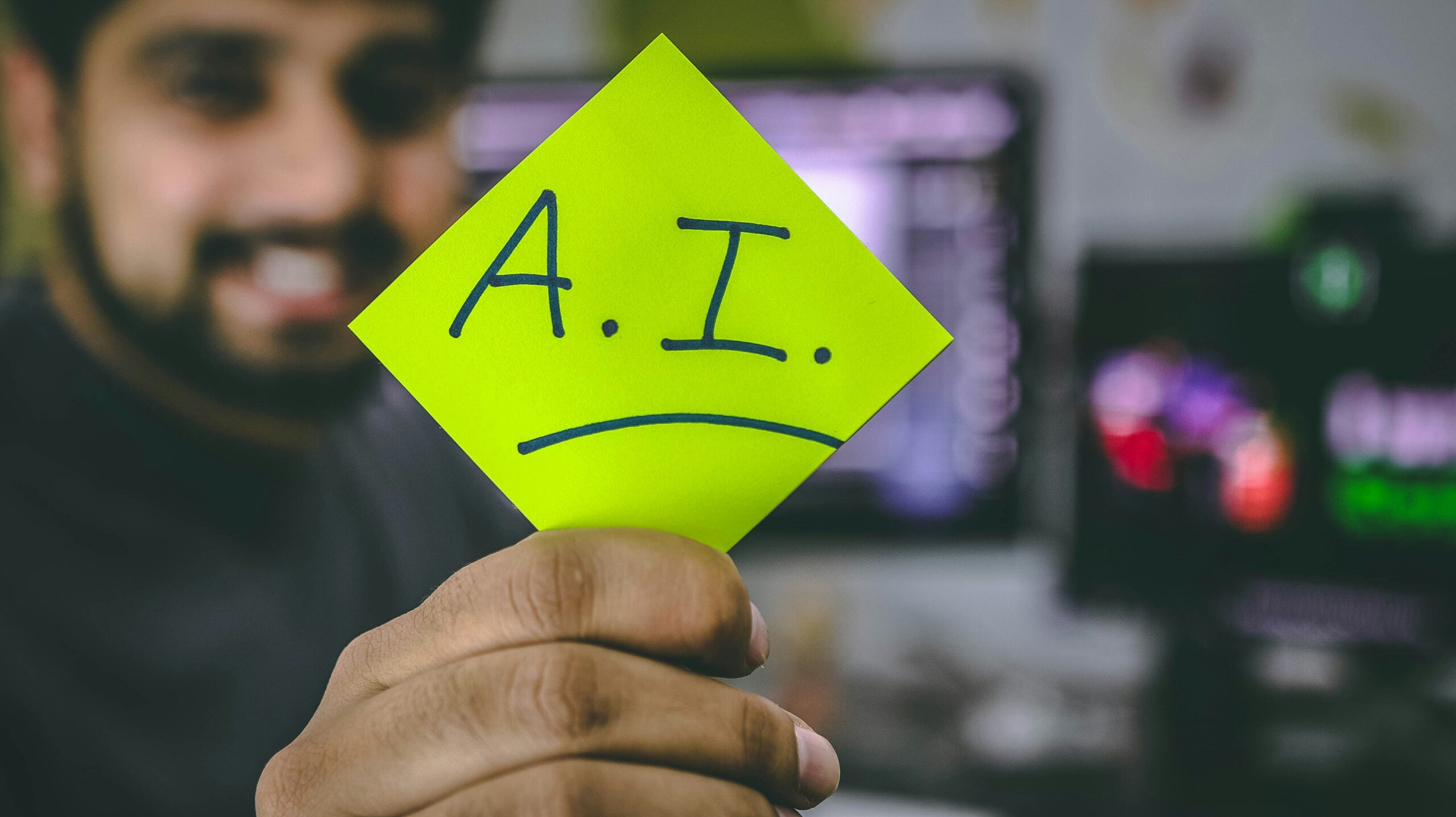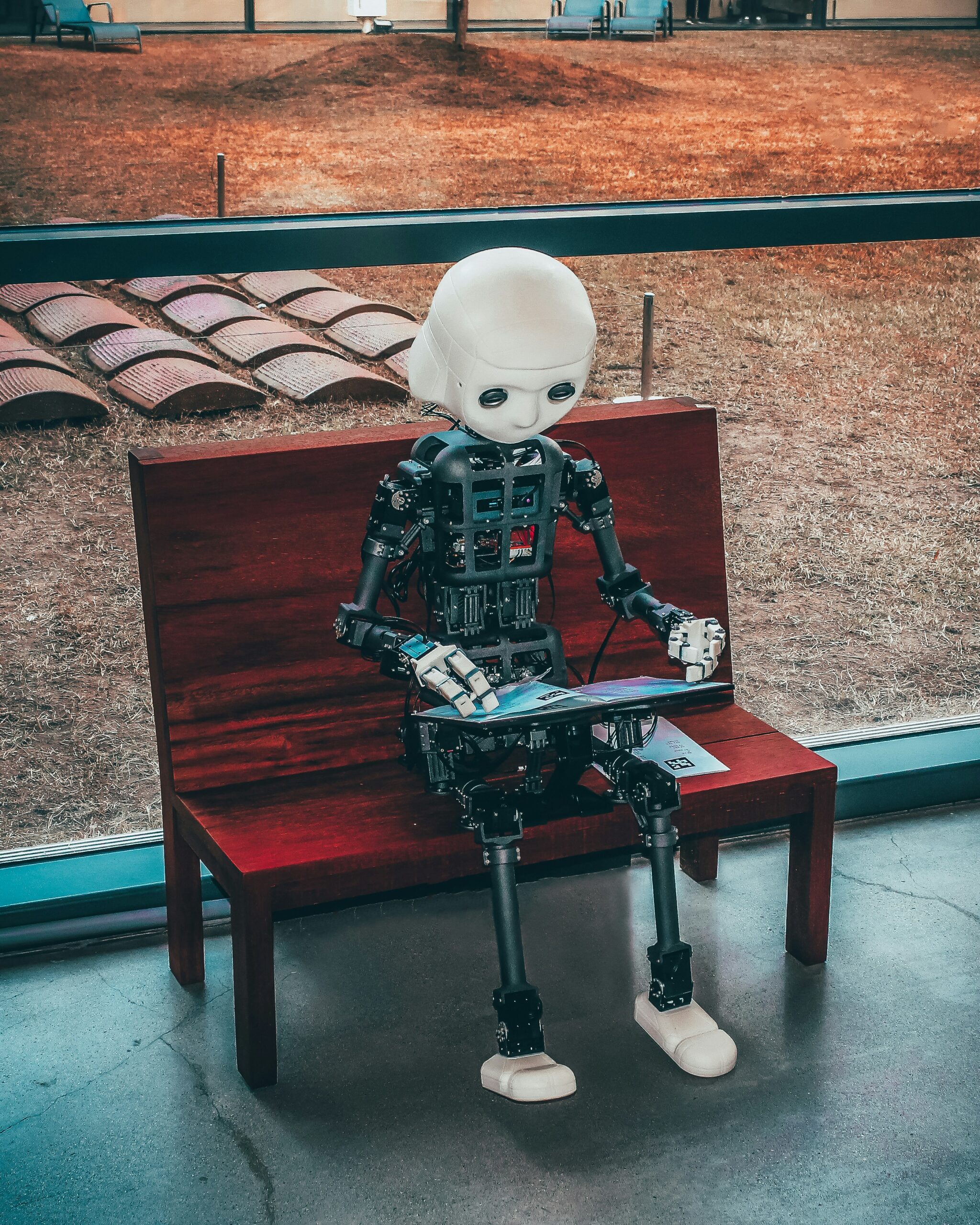Artificial Intelligence, or AI, has undoubtedly exploded in the collective consciousness. Notably, ChatGPT shattered records last year by exceeding 100 million monthly users more quickly than any other application in history. AI knowledge tools are now embedded in every business and social sector. Clearly, this technology has exciting possibilities for improving educational outcomes, but it also raises concerns about plagiarism, misinformation, and other nasties. This article explores machine learning and its implications on progress in the classroom.
What is AI exactly?

Courtesy of Unsplash
AI (according to itself, or ChatGPT) “refers to the simulation of human intelligence processes by machines, especially computer systems.” AI-fueled programs can perform various cognitive tasks, including data learning, decision-making, language processing, and problem-solving. The technology isn’t exactly new, but it has certainly achieved breakthroughs and advancements within the last ten years.
Did AI write this blog post? (Technically, no, but it was helpful in sourcing statistics, definitions, and other data, so maybe AI deserves a writing credit?)
How can educators use AI?
As an evolving technology, we can only speculate on the long-term effects and future utilization. The adaptive features, in particular, would allow for real-time assessments and lesson customization. Many schools already use responsive learning games with students, and programs such as Khan Academy and Duolingo mimic the one-on-one tutoring dynamic vis-a-vis responsive technology. In addition to those benefits, automation has significant administrative advantages, such as lesson planning or grading assistance. According to professionals, these tasks often eat away at direct instructional time with students.
What are some ways to handle AI’s challenges?
Harvard lecturer and educator Houman Harouni likened AI to the smartphone, explaining that such seismic technical advances “create a shock” that humans do not “fully understand” yet. He advises ” dancing with [AI]” rather than fighting with it. In other words, educators can see AI as a useful tool and use their role to assist students in navigating it (rather than pretending it does not exist and cannot write their term papers). This requires not only a shift in mindset but a shift in teaching practices as well. (Automation does not necessarily replace human labor, but it does change how it is performed.) Educators may (and many already do) incorporate AI into their curriculum and challenge students to think beyond computer-generated responses.
Other useful for educators or parents:
Teach responsibility: Like the Internet as a whole, students will need instruction on the ethical uses of this technology, specifically how to think critically when evaluating information (i.e., not relying upon AI as source material).
Collaborate with AI: Interact with AI tools alongside students to demonstrate its features and shortcomings, stimulate critical thinking, and inspire higher-level problem-solving.
Create an AI policy for the classroom: This could be done with input from students. (Many educators, particularly high school teachers, implement cell phone policies in their classrooms.) Set expectations immediately, and be explicit about what is considered cheating.
Final thoughts?
While AI may one day replace traditional teaching, it still lacks a flesh-and-bone tutor’s emotional attunement and adaptability. If you are interested in our services (with humans), please click here or contact us to learn more.


